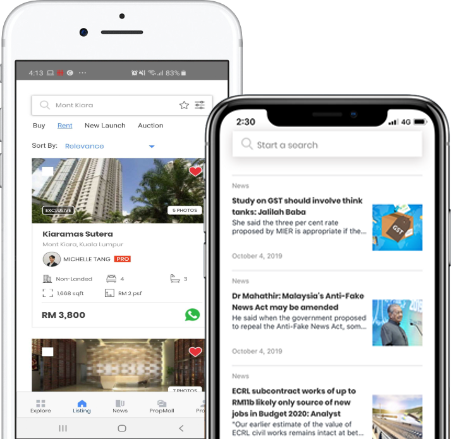Property developers in the Gulf are putting more emphasis on mundane but affordable housing after getting burnt by grand and audacious real estate projects that became financial burdens when market bubbles burst three years ago.
Their motives are mainly economic but they are being encouraged by governments that are trying to improve mass living standards after the political unrest in the region this year, which was partly attributed to a chronic lack of affordable, quality housing for growing populations.
“Post-Arab Spring, countries like Saudi and Bahrain have realised that affordable housing is an issue,” says Deepak Jain, head of strategic consulting for the Middle East and North Africa at real estate services firm Jones Lang LaSalle. “The focus now is on building as per occupier demand, a concept that is relatively new in the region.”
Saudi Arabia has promised to spend about US$130 billion (RM406.19 billion), or around 30% of its annual economic output, on social projects such as building new houses and creating jobs over an unspecified period. Earlier this year, King Abdullah pledged SAR250 billion (RM209.26 billion) to be spent on 500,000 new homes.
Bahrain is pushing to fill a longstanding shortage of about 50,000 affordable homes, hoping this will also mitigate some of the discontent behind the unrest that hit the tiny island state in February and March. By launching big housing projects and awarding the contracts to developers, governments in the Gulf can influence the types of homes being built and the pricing.
In April, for example, Abu Dhabi awarded a AED21 billion (RM17.94 billion) contract to state-linked firms to build housing for the local population. It has said it wants to provide “adequate and modern housing” for citizens “to help achieve social stability”.
Many property developers in the region are partly owned by the government or, in the case of the United Arab Emirates, were bailed out by the state after the market soured and they ran into debt two or three years ago. Aldar Properties, the biggest developer in Abu Dhabi, was given a US$5.2 billion bailout by the state-owned Mubadala fund. Even without the encouragement of governments, developers in the Gulf see good reasons to build more modest homes.
In Dubai, home to the world’s tallest tower and luxurious waterfront villas on a man-made, palm-shaped island created by developer Nakheel, companies are grappling with leftover inventory from a building boom that ran until 2008 and left many grand properties on the market that owners are desperate to sell or rent. That has encouraged developers to shift their focus from villas and tall towers to mid-income housing.
“In the UAE, most [of the] interest has been driven by speculator demand. The speculator market represented more than half the real estate market. They all have left now,” says Jain.
An average two-bedroom apartment now costs over AED1 million in a middle-class neighbourhood of Dubai, after prices plunged over 50%. An apartment of similar size would cost well over US$400,000 in London.
Aldar Properties, builder of Abu Dhabi’s Formula One race track and related development on Yas Island which includes a marina and yacht club, has said its focus is now mid-income housing.
Bahrain
Bahrain may be the most dramatic example of the shift in the Gulf’s real estate market. Many commercial buildings in Manama — completed before the 2008 property bust in order to house foreign companies in the city, a Gulf financial hub — are unoccupied. A July report by property firm Cluttons estimated only about 60% to 70% of office space in Bahrain was used.
The residential property market never recovered after the 2008 bust, and any hope of a revival of interest in prime property among regional and foreign investors was wiped out by months of political unrest that swept the country this year.
“Lots of companies in financial services who were thinking of setting up base in Bahrain have either halted their plans or moved to Dubai,” says Shakeel Sarwar, head of asset management at Bahrain-based Securities and Investment Co.
Home rents have plunged about 50% in some areas of Bahrain, and selling prices have dropped by similar margins.
“Investor sentiment in the kingdom has waned, with those who are active only seeking distressed assets which are backed by strong market fundamentals,” says Kristian Syson, Bahrain-based head of valuations at Cluttons.
Like Dubai, Bahrain has a massive housing project under construction on a string of artificial islands along its coast: a US$6 billion development called Durrat Al Bahrain.
But the islands, some shaped like fish, mainly feature mid-income housing, in stark contrast to Nakheel’s Dubai Palm project, which offered multi-million dollar properties to European football stars and celebrities.
“Nakheel did not realise its market ... we know whom we are building for,” Durrat Al Bahrain Chief Executive Jassim Al Jowder told Reuters.
“Developers in Bahrain now know that the shortage is in affordable, medium-sized housing. We are all targeting this market now.”
Suleiman, a driver in Bahrain who dreams of a owning a house someday, says: “Who needs tall towers? We need a good home.” He adds that governments in the region are now more keen to keep citizens happy: “I think maybe the government will listen to us now.” — Reuters
This article appeared in City & Country, the property pullout of The Edge Malaysia, Issue 877, Sep 26-Oct 2, 2011





